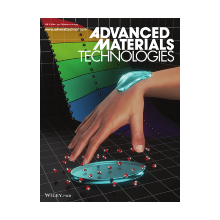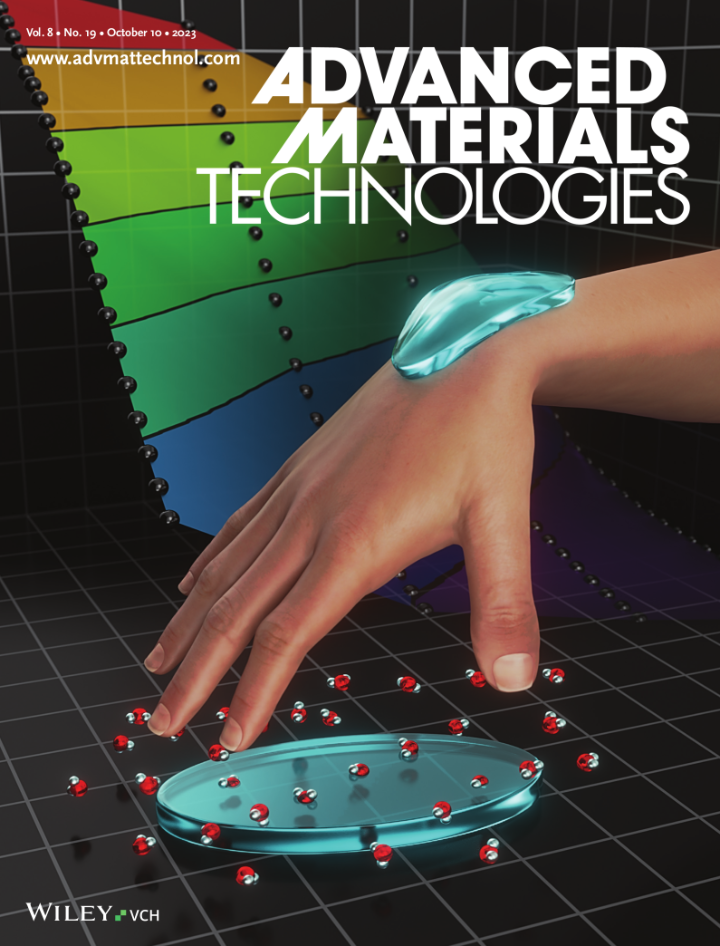Dominik Fauser, Holger Steeb et al. just published their work in Advanced Materials Technologies:
This publication was prepared in the context of EXC 2075 SimTech and SPP 2100 together with Dominique Lunter from Eberhard-Karls-Universität Tübingen and Sabine Ludwigs from the Institute of Polymer Chemistry.
Additionally, this article was selected to inspire the cover picture for Volume 8, Issue 19 of the scientific journal Advanced Materials Technologies, as can be seen below!
Authors
- Stephan Pflumm
- Yvonne Wiedemann
- Dominik Fauser
- Javidan Safaraliyev
- Dominique Lunter
- Holger Steeb
- Sabine Ludwigs
Abstract
Intelligent humidity-programmed hydrogel patches with high stretchability and tunable water-uptake and -release are prepared by copolymerization and crosslinking of N-isopropylacrylamide and oligo(ethylene glycol) comonomers. These intelligent elastomeric patches strongly respond to different humidities and temperatures in terms of mechanical properties which makes them applicable for soft robotics and smart skin applications where autonomous adaption to environmental conditions is a key requirement. It is shown that beyond using the hydrogel in the conventional state in aqueous media, new patches can be controlled by relative humidity. This humidity programming of the patches allows to tune drug release kinetics, opening potential application fields such as skin wound therapy and personalized medication. In situ dynamic-mechanical measurements show a huge dependence on temperature and humidity. The glass transition temperature Tg shifts from around 60°C at dry conditions to below 0°C for 75% r.h. and higher. The storage modulus is tunable over more than four orders of magnitude from 0.6 up to 400 MPa. Time-temperature superposition in master curves allows to extract relaxation times over 14 orders of magnitude. With strains at break of over 200% the patches are compliant with human skin and therefore patient-friendly in terms of adapting to movements.
Please cite as
S. Pflumm, Y. Wiedemann, D. Fauser, J. Safaraliyev, D. Lunter, H. Steeb, and S. Ludwigs. Autonomous Adaption of Intelligent Humidity-Programmed Hydrogel Patches for Tunable Stiffness and Drug Release. Advanced Materials Technologies, 8, 2023, Doi: 10.1002/admt.202300937



